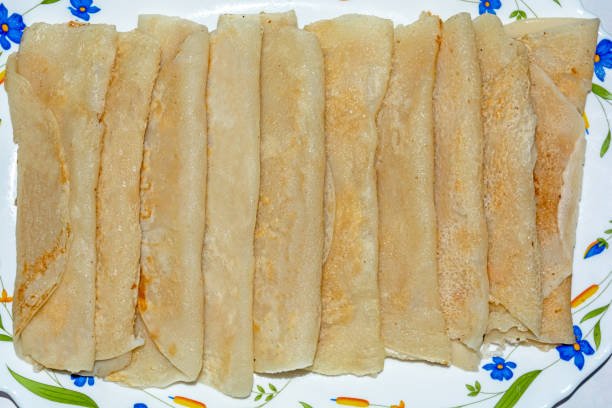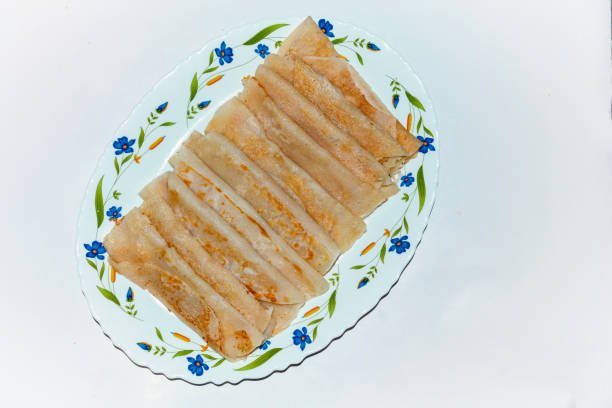Dear friends,
How are you all? Hope you all are fine! Today I am here to represent a traditional pancake like recipe. Before that would like to share with you few information related to this dish. This is a popular Bengali dessert. During mid- January, Poush month of the Bengali calendar ends. That day called the "Poush Sankranti". Considered to be a holy day so it is celebrated by most Hindus in India. As it is a celebration of new harvest, foods which have rice in it becomes the center point. This ritual is very prevalent in the Bangladeshi community too.
Ingredients:-
For outer part:-
1. All purpose flour- 1 cup.
2. Semolina- 1/2 cup.
3. Rice flour- 1/2 cup.
4. Milk- 2 cups.
5. Plam jaggery (nolen gur)- 4tbsp.
6. Ghee(clarified butter)- 3tbsp.
For filling:-
1. Coconut- 3cups.
2. Khoya kheer(Mawa)- 1/2 cup.(grated).
3. Date jaggery- 3/4 cup(grated).
4. Green cardamom powder- 1/2 tsp.
Preparation Method:-
For the outer-
Step 1- First, add rice flour in a bowl, mix it with 1/2 cup of water. Stir well for 2-3 minutes to mix it properly. Then add 1/2 cup of milk into it. Stir continuously so that there shouldn't be any lumps. Cover the bowl and set aside for 15 minutes.
Step 2- After 15 minutes, add all purpose flour in batches,more milk and stir continuously, then add semolina. Mix well.
Step 3- Need to stir continuously, now add 4tbsp of jaggery. Remember the batter shouldn't be too runny or too thick. The consistency of the batter should be medium. Once get the medium thick batter, set aside.
For the Filling:-
Step 1- Place a pan on medium flame. Add 2tbsp of clarified butter. Now add grated coconut. Saute for 2 minutes.
Step 2- Then add grated jaggery, mix well. Once jaggery will melted well add Mawa(grated khoya), mix nicely.
Step 3- Once all ingredients combine well with each other, sprinkle Cardamom powder. Mix well. Make sure filling shouldn't be too dry, moisture should be there. Turn off flame once get the proper texture.
Assembly:-
Step 1- Place a flat non-stick flat pan (tawa) on medium flame. Brush little clarified butter on its surface. Remove excess ghee if there is any with the help of a paper towel.
Step 2- With the help of a ladle, pour a thin layer of the mixture middle of the pan and spread it quickly in a circular way with the ladle.
Step 3- Once the rice pancake will start bubbling, place the filling in the lengthwise on side of the pancake.
Step 4- Roll the pancake and cook until light golden. Follow the same for the remaining batter and filling.
Step 5- Once get the texture transfer into a plate. Now it's ready to serve . You can serve it hot or cold. In both condition it will taste Great.



Comments
Post a Comment